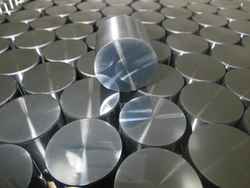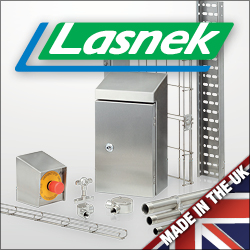
Posted to News on 14th Oct 2013, 16:00
Coatings prolong bearing life in harsh environments
Often, operating conditions exist that are beyond the limits of standard bearings. However, by applying a coating or combination of coatings to the base material of bearing components, the operating life of the bearings can be extended significantly. With increasing demands being placed on bearings, it is often necessary for bearing manufacturers to offer customers combinations of coatings for particular applications.

As Dr Tim Hosenfeldt, Head of the Surface Technology Competence Centre at Schaeffler states: "Our customers expect us to provide holistic, consistent support - starting with technical advice and the development of coating systems, through to delivery and quality assurance. We offer customers a range of coatings from which to select the most suitable solution. Our Competence Centre uses the most innovative PVD (Plasma Vapour Deposition), PACVD (Plasma-Assisted Chemical Vapour Deposition) and electroplating technologies."
He continues: "Even for extreme applications - which are becoming more frequent these days - combined coating methods can be implemented. In these types of application, we are exploring the very edges of physical and chemical thresholds. We're not just talking about nanotechnology, but also manufacturing and delivering corresponding products in high volumes. Customers also expect us to manufacture prototypes quickly and to develop these through to volume production."
Hosenfeldt says that surface technology is enabling the "customisation of surfaces for a specific purpos", including the provision of built-in "intelligence' by adding sensory properties. Depending on the particular application, these surface layers can be water resistant, or can provide reduced friction levels on mating components, or they can protect metals from corrosion.
Hosenfeldt adds: "The latest developments give rise to multifunctional and sensor technical coatings. For example, the development of the novel Triondur DLC coating systems from Schaeffler, which can be adapted to the respective conditions such as high-additive, low viscous engine lubricating oils, has enabled a reduction in friction levels of up to 50 per cent."
In 2011, Schaeffler invested several million euros in new surface coating machinery at its automotive engine component manufacturing plant in South Wales. The coatings plant enables the factory to coat the surface of engine components such as mechanical tappets with an ultra-thin Triondur DLC, very hard, multi-layer coating. This black-coloured coating is applied via special, vacuum-controlled chambers. The function of the wear-resistant coating is to minimise friction between mating components in the engine, resulting in lower fuel consumption and reduced CO2 emissions.
Environmentally friendly
The applied coating material is either in the form of a solid (PVD) or in the form of a gas (PACVD). In contrast to conventional coating methods, this new technique enables Schaeffler to produce the required compositions of materials and coatings using an environmentally friendly (no CO2 is produced) vacuum process.
For industrial rolling bearing applications, many different types of coatings are available, which can be applied using a variety of methods and which offer a wide range of advantages for the component. In many cases, it is sufficient to coat only one of the bearing components in rolling contact.
If problems of corrosion, wear or the passage of electric current are expected, coatings are normally applied to the base material of bearing components. The coating is typically applied to the surfaces of components without thermo-chemical diffusion taking place between the coating and the base material.
Corrosion or fretting corrosion can be prevented by applying a zinc-iron alloy or zinc-nickel coating to the bearing components (inner rings, outer rings, rolling elements, etc.). For example, a very thin (0.5-5um) layer of zinc-iron applied to a bearing component provides good, cost effective, anti-corrosion protection in accordance with salt spray tests to DIN EN ISO 9227, of between 48 and 360 hours against red rust formation. If increased corrosion protection is required, for example, for automotive components or for large bearings in steel rolling mills, a zinc-iron alloy coating with passivation or chromating can be applied.
For high quality cathodic anti-corrosion protection, zinc-nickel alloys with thick layer passivation (or electroplated layer) can be used. This type of coating, which is normally silver or slightly iridescent yellow, is commonly applied to automotive and industrial components that require very high anti-corrosion protection, such as steering and detent bushes, bearing pins and mechanical levers.
For even higher levels of anti-corrosion protection, zinc lamellar coatings can be used. These silver-grey, 8-15um thick coatings are often applied to automotive components such as wheel bearings, screws, sensor and intermediate rings. These coatings are soft and partially cathodic.
Many precision rolling bearings require protection from wear, friction or slippage. Here, a variety of coatings can be applied to bearing components, including mixed iron oxide coatings for improved running-in behaviour and which prevent slippage. These coatings are commonly used for ball bearings that operate in poor lubrication conditions, as well as for rolling elements and rings for bearings in wind turbines.
If fretting corrosion is expected, zinc phosphate coatings can be used. These coatings help prevent fretting corrosion in the bearing seat, for example, in tapered roller bearings for rail vehicles, or in large bearings on paper mills.
Manganese phosphate coatings are applied when improvements in sliding or running-in behaviour are required. Application examples include inner ring bores in crankshaft bearings, sheet steel cages, adapter and withdrawal sleeves.
High wear resistance to fretting corrosion
For bearings that require high wear resistance (high hardness), particularly at the axial contact running points or on surfaces where fretting corrosion is expected, columnar hard chromium coatings are recommended. These coatings also provide effective anti-wear protection under mixed friction conditions, particularly for small ball bearings or rolling bearings. Corrosion resistance is typically up to five times higher than rolling bearing steel (salt spray test to DIN EN ISO 9227) and hardness is approximately 1000HV. Typical applications include raceways in high-precision bearings, outside diameter of spindle bearings, ball bearing rings for swash plates in helicopters, linear bearing components, and for the complete coating of spherical roller bearings (rings and rolling elements) in corrosive environments.
Dark grey or black in colour, PTFE coatings are used to improve the sliding capacity of the bearing outer ring. Another advantage is the reduction in the friction factor to less than 0.1 under axial displacement of the bearing rings. Application examples include main rotor bearings on wind turbines and spherical roller bearings for cement mills and paper mills.
If the bearings need to be insulated from the passage of electric current, oxide ceramic coatings can be applied. These normally take the form of a ceramic coating comprising aluminium oxide with sealant. Coating thickness is typically between 100 and 200um. Depending on the type of coating used, current resistance of up to 1000V, even in damp environments, can be provided. Typical applications include bearings in three-phase motors, traction motor bearings, wheelset bearings, and bearings for wind turbine generators.
For surfaces that are subjected to high tribological stresses with lubricant starvation, carbon coatings can be used. These hard, amorphous, non-metallic hydrocarbon coatings are typically 2-4 um thick and offer improvements in friction reduction by up to 85 per cent compared with steel/steel. Advantages include very high anti-wear protection under mixed friction conditions and higher wear resistance due to high hardness (greater than 2000HV). Application examples include valve train components such as tappets, and anti-wear protection in diesel injection components. Other coatings used here include metal-doped carbon, chromium nitride, chromium carbonitride, and titanium nitride coatings.
To learn more about coatings for bearings, please go to www.schaeffler.co.uk.


















